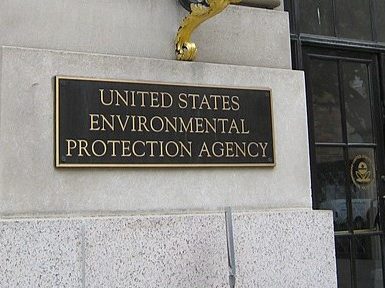The DREAM Act (Development, Relief, and Education for Alien Minors) was recently passed through the United States House of Representatives after 18 years of debate.
However, the legislation — the American Dream and Promise Act of 2019, H.R.6 — that would offer a legal path of residency to 2.5 million immigrants living and working in America will not be voted on in the U.S. Senate.
“It is critical for both parties in both houses of Congress to come together on a path forward on immigration reform legislation,” U.S. Chamber of Commerce Executive Vice President Neil Bradley said in a statement following the June 4th vote. “Our communities, businesses, and economy are all made stronger by the many contributions of Dreamers and TPS recipients.”
According to the Center for Migration Studies, 325,000 of those who would be helped are recipients of the Temporary Protected Status (TPS) program. The rest are mostly Dreamers or immigrants who were brought to the U.S. as young children.
While the passage of the DREAM Act may send a positive message, the almost two-decade fight for Dreamers is nowhere near over. Here’s the history behind Dreamers and the fight for immigration reform.
June 2012: The Obama Administration creates Deferred Action for Childhood Arrivals
In June 2012, President Barack Obama announced the Deferred Action for Childhood Arrivals (DACA) program that defers deportation for Dreamers who met certain criteria on a two-year renewable basis.
“These are young people who study in our schools, they play in our neighborhoods, they’re friends with our kids, they pledge allegiance to our flag. They are Americans in their heart, in their minds, in every single way but one: on paper. They…often have no idea that they’re undocumented until they apply for a job or a driver’s license, or a college scholarship,” Obama said in his June 15, 2012 remarks.
However, Obama made it clear that DACA was not a path to citizenship saying “it’s not a permanent fix. This is a temporary stopgap measure that lets us focus our resources wisely while giving a degree of relief and hope to talented, driven, patriotic young people,” and urging Congress to pass the DREAM Act.
August 2016: then-presidential candidate Donald Trump promises to terminate DACA
In 2016, then-presidential candidate Donald Trump released a 10-point immigration plan that included building a physical wall at the southern border; ending sanctuary cities (where local law enforcement is not required to alert federal authorities of illegal immigrants); and ending DACA and Deferred Action for Parents of Americans and Lawful Permanent Residents.
“We will immediately terminate President Obama’s two illegal executive amnesties in which he defied federal law and the Constitution to give amnesty to approximately five million illegal immigrants,” President Trump said to a crowd in Phoenix in 2016.
November 2016: President-elect Donald Trump softens his stance on DACA
“We’re going to work something out that’s going to make people happy and proud,” Trump said in a 2016 interview with Time magazine. “They got brought here at a very young age, they’ve worked here, they’ve gone to school here. Some were good students. Some have wonderful jobs. And they’re in never-never land because they don’t know what’s going to happen.”
September 2017: The Trump Administration revokes DACA
On Sept. 5, 2017 Attorney General Jeff Sessions announced that DACA would be rescinded.
“The [Obama Administration], through DACA, deliberately sought to achieve what the legislative branch specifically refused to authorize on multiple occasions. Such an open-ended circumvention of immigration laws was an unconstitutional exercise of authority by the Executive Branch,” Sessions said.
The Trump administration planned to adjudicate applications filed by Sept. 5 on a case-by-case basis and reject any new request filed after. Individuals with DACA protection that expired in March 2018 had until Oct. 2017 to apply for renewal.
“.@POTUS’s decision on #DACA is [the] wrong approach at a time when both sides need to compromise on #immigration reform,” the late Senator John McCain (R-AZ) tweeted.
.@POTUS‘s decision on #DACA is wrong approach at a time when both sides need to compromise on #immigration reform https://t.co/kPBCUhJ2m4 pic.twitter.com/5stY5spxOC
— John McCain (@SenJohnMcCain) September 5, 2017
“I strongly believe children who were illegally brought into this country through no fault of their own should not be forced to return to a country they do not know,” continued McCain.
Then Congresswoman Kyrsten Sinema (D-AZ) also tweeted in opposition to Trump’s decision to end DACA.
“Ending DACA creates uncertainty, hurts AZ families & businesses. It’s time for Congress to pass the DREAM Act,” she said.
Ending DACA creates uncertainty, hurts AZ families & businesses. It’s time for Congress to pass the DREAM Act. READ: https://t.co/Eu5cve2W4u
— Kyrsten Sinema (@SenatorSinema) September 9, 2017
January 2018: Judge orders Trump to resume DACA renewals
A federal judge ordered the Trump Administration to resume enrollment renewals in the DACA program Jan. 9, 2018.
San Francisco-based U.S. District Court Judge William Alsup temporarily blocked the Justice Department’s revocation of DACA.
“The most practical relief is to maintain DACA in the same manner to which the agency
and recipients are accustomed, subject to the exceptions above noted,” Alsup’s order read.
On Jan. 20, 2018 the federal government shut down for the first time since 2013 over Dreamer negotiations. Many Senate Democrats rejected a bill that would keep the government running without a solution for Dreamers.
Two days later the government reopened after Republican leadership commits to consider DACA-related legislation, according to Senate Minority Leader Chuck Schumer (D-NY).
We will vote today to reopen the government, to continue negotiating a global agreement, with the commitment that, if an agreement is not reached by Feb 8th, the Senate will immediately proceed to consideration of legislation dealing with DACA. The process will be neutral & fair.
— Chuck Schumer (@SenSchumer) January 22, 2018
May 2018: Texas leads charge to end DACA
Seven states —Texas, Alabama, Arkansas, Louisiana, Nebraska, South Carolina and West Virginia — filed a lawsuit against the Trump Administration to end the DACA program. The lawsuit urged the federal government to declare the program unconstitutional and stop issuing or renewing DACA permits.
Dreamers in Texas responded by asking the U.S. federal court for permission to have a judge consider their interests in the lawsuit.
August 2018: U.S. Court orders Trump Administration to fully reinstate DACA
On Aug. 3, 2018, U.S. District Judge John Bates in Washington, D.C., ruled that the Trump Administration had to fully restore the DACA program, including accepting new applications for the program.
His original ruling had come in April, but Bates gave the government 90 days to better explain why the program should be terminated.
November 2018: Trump wants to work with Congress, U.S. appeals court rules against Trump on DACA
On Nov. 7, 2018, Trump said he hoped to work with Congress on immigration reform wanting money for his border wall and adding there was a possibility of addressing DACA.
Trump said he saw the potential of working with Democrats on DACA depending on the U.S. Supreme Court’s decision over the administration’s request to end the program.
“I think we could really do something having to do with DACA,” Trump said. “We’ll see how it works out at the Supreme Court.”
December 2018: Government partially shuts down over border wall funding
In early December Congress had failed negotiations on the government budget. Republicans wanted more money for border patrol agents and necessary fences while Democrats wanted better surveillance technology and more resources at ports of entry.
On Dec. 11, 2018, Trump said he is “proud…to shut down the government for border security,” referring to his efforts to secure money to fund a border wall.
Over a week later, Congress passed a budget with $1.5 billion for border security, but nothing for the wall. The next day, Trump said he would not sign a budget unless it included $5.7 billion for a border wall.
On Dec. 21, the House of Representatives passed a stopgap funding bill with $5 billion for the border wall but the Senate refused to vote on it.
At midnight on Dec. 22 the government partially shutdown. The shutdown continued until Jan. 25, 2019 marking the longest U.S. government shutdown in history.
January 2019: DACA not on negotiating table, Trump proposes wall-for-DACA, Government reopens
On Jan. 10, 2019, Vice President Mike Pence said the DACA program will not be on the negotiating table until the U.S. Supreme Court weighs in, saying Trump is “very amenable” to changing laws that allow for in-country asylum processing of minors.
Nine days later, in hopes of ending the shutdown Trump proposed an immigration deal that included three-years of protections for Dreamers and TPS holders if there is $5.7 billion added to the budget for his wall.
On Jan. 25, 2019, Trump surprised Americans by reopening the government after signing the stopgap budget that did not include any money for the wall.
“We really have no choice but to build a powerful wall or steel barrier,” Trump said. “If we don’t get a fair deal from Congress, the government will either shut down on Feb. 15, or I will use the powers afforded to me under the laws and Constitution of the United States to address this emergency.”
February 2019: Arizona lawmakers debate DACA tuition bill
In February, Republican Arizona State Sen. Heather Carter (LD15) introduced Senate Bill 1217. The bill would allow Arizona public universities and community colleges to create new tuition rates for any student who graduates from an Arizona high school.
The bill meant that Arizona high school graduates who decided to apply to a university or community college within four years of finishing school were entitled to an amount prescribed by the Arizona Board of Regents or Community College District Governing Board, including Dreamers.
Ultimately, the bill did not pass.
June 2019: Supreme Court DACA hearing
On June 3, 2019, the Supreme Court declined the U.S. Department of Justice’s request to consider whether to take up a case concerning the Trump administration’s decision to phase out DACA. This is a setback for the administration.
On June 7, 2019 the DREAM Act passed on party lines through the House of Representatives.
On June 10, 2019, CNN reported that the Supreme Court would meet behind closed doors on June 13 to discuss DACA. This led individuals to believe that the DACA case might be one the court would take up during its next term.
















Add comment